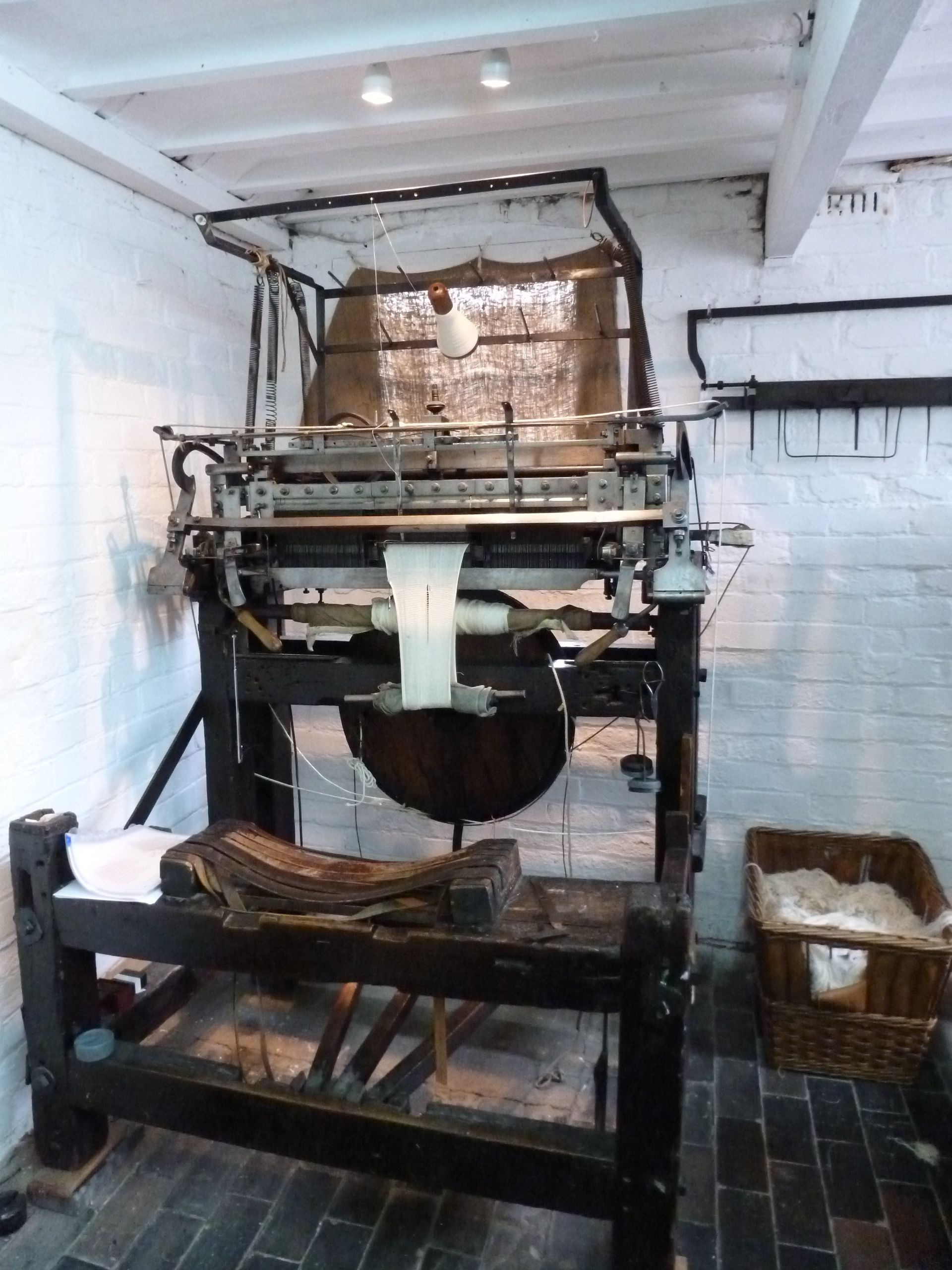In the 80 years between 1788 and 1868, over 160,000 people were transported from the UK to Australia for various crimes (1). The option of transportation rather than imprisonment in the UK could be attractive to some convicts, but not all who boarded the ships arrived safely. This was the case for many of those on the convict ship Waterloo, which left England bound for Van Diemen's Land in 1842.
One of those on board the Waterloo was Richard Holyland. Richard was baptised in Desford, Leicestershire, in 1806, the first child of his parents William and Hannah, and in 1825 married Elizabeth Clamp in the nearby village of Ibstock. The 1841 census shows the couple in Ibstock with five children, the youngest just 2 years old; Elizabeth would be pregnant again within a few months.
Like many in the village, Richard was a framework knitter (FWK). This semiskilled trade had been the lifeblood for many families across the Midland counties, where whole families were involved producing piecework from knitting frames kept in the family home. However by the 1840s, the leicestershire textile trade was in decline and poverty and destitution were becoming significant problems in the trade. (2), (3)
It's easy to imagine that this could be why Richard went out poaching one night early in 1842 with several companions, on land belonging to Lord Howe. Details are missing from the court reports, other than that the gang also "mistreated" a gamekeeper. Having been caught, one of them turned Queen's evidence; two were dealt with comparatively leniently, having no previous "form"; but Richard, "having been convicted of various felonies", was sentenced, with others in the gang, to be transported for 14 years.
(In the Summer assizes of 1827 in Leicester, a Richard Holliland had been convicted of housebreaking and sentenced to death,but received a full pardon in 1831. This could have been the same man, but this is not proven. Apart from that,there was one appearance in court in 1835 for larceny; that charge was dropped. I've not been able to confirm any other previous convictions carried by Richard).
 |
| Framework knitting machine at Ruddington FWK museum, Leicestershire |
The Waterloo left Sheerness on 1 June 1842, bound for Van Diemen's Land; Richard left five children and his wife heavily pregnant with a sixth. This was the seventh time that the Waterloo had been used as a convict ship carrying human cargo to the antipodes and on this journey, under Captain Henry Ager, she was carrying 219 prisoners, 30 soldiers of the 99th regiment, 5 women and 13 children, as well as the crew. The prisoners were routinely kept in irons and below deck on such a journey.
The ship reached the Cape of Good Hope in late August, and anchored in Table Bay, where the captain went onshore to fetch provisions (the ship's surgeon had been concerned about scurvy amongst the prisoners). On 28 August 1842, after two days of a fierce storm, a hurricane developed. Another troop ship in the bay, the Abercrombie Robinson, was driven ashore, but with minimal loss of life. However, the storm had already broken the topmasts of the Waterloo and the ship, driven towards shore by high seas and winds, heeled over. Shortly before this, the ship's surgeon had ordered the convicts to be freed from their irons, but this was not enough to save most of them. There were no lifeboats or rescue systems in place, either on the Waterloo or on shore, and horrified onlookers could only watch as the ship was torn apart on the rocks.
 | |||||||||||||||||||||||||||||||||
| Image of the shipwreck by the lithographer, Charles Hutchins, after a sketch by Lieutenant Hext of The King's Own Regiment |
In total, 189 people died-- 143 convicts, 15 soldiers, 17 wives and children, and 14 crew members. The captain survived. Amongst the dead was Richard Holyland, who, coming from Leicestershire, had probably never seen the sea before embarking. 72 surviving convicts were taken to Cape Town prison, then sailed for Hobart on October 15, eventually arriving in mid November 1842.
News travelled slowly in those days and it was three months before the disaster was reported in the British press. There was much criticism both of the state of the ship, and of the Captain's decisions to anchor where he had, and to leave the boat to go on shore.
" Of the Waterloo it is impossible to speak with
moderation. Deadly blame rests somewhere, and justice will, we have no
doubt, find out the parties that deserve it."
South African Commercial Advertiser. 31 August 1842.
Of course, the true list of victims of the shipwreck extends far beyond those drowned. Back in Leicestershire, Richard Holyland's widow Elizabeth changed the family name to Holland. She and her adult children are listed as paupers in the 1851 census. Elizabeth never remarried, and eked out a living as a knitter for the rest of her life.
(1) https://web.archive.org/web/20160101181100/http://www.australia.gov.au/about-australia/australian-story/convicts-and-the-british-colonies
(2) https://www.pressreader.com/uk/who-do-you-think-you-are-magazine/20170606/281547995840657
(3) "Honest People But Destitute. The plight of leicestershire's framework knitters in the 1840s". Jenkins, Jess; publ by Leicestershire Record Office, 2005.
(4) https://en.wikipedia.org/wiki/Waterloo_(1815_ship)
Comments
Post a Comment